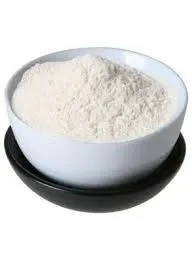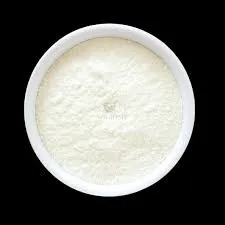
Peb . 03, 2025 04:49 Back to list
RDP


Furthermore, redispersible powders enhance the workability of concrete, making it easier to handle and apply. This is particularly beneficial in complex constructions where precision is critical. By improving the handling characteristics of concrete, construction workers can achieve superior finishes that meet stringent project specifications. Enhanced workability also means reduced labor efforts, resulting in a more efficient building process and reduced project timelines, which translates into cost savings. Another noteworthy application is in external thermal insulation composite systems (ETICS), where these powders help in creating a weather-resistant barrier that enhances energy efficiency. The use of redispersible powders in such systems ensures that the insulation layers remain intact and effective against the elements. This not only assists in conserving energy by maintaining consistent internal temperatures but also reduces the dependency on artificial heating and cooling, thus benefiting the environment. Industry experts emphasize the importance of these powders in sustainable construction practices. By allowing for thinner, lighter constructions without sacrificing performance, redispersible powders contribute to resource efficiency. This aligns with the global trend towards eco-friendly building solutions, further consolidating their position as a key component in modern construction paradigms. With ongoing advancements in material science, the potential applications of redispersible powders continue to grow. Researchers and industry professionals are consistently discovering new ways to leverage their unique properties to solve emerging challenges in construction. This ongoing innovation reflects their pivotal role in driving the future of building materials. In conclusion, redispersible powders are integral in shaping resilient, efficient, and sustainable construction practices. Their multifunctional benefits ensure that buildings not only meet current standards but are also future-ready, highlighting their significance in the ever-evolving landscape of the construction industry.
-
Unlocking the Benefits of HPMC Products: A Gateway to Versatile Applications
NewsAug.07,2025
-
Unleashing the Potential of HPMC Ashland: A Comprehensive Look
NewsAug.07,2025
-
Tile Bonding Cellulose: The Key to Superior Adhesion and Durability
NewsAug.07,2025
-
Hydroxypropyl Methylcellulose Powder: The Versatile Component in Modern Pharmaceuticals
NewsAug.07,2025
-
Hydroxyethyl Cellulose: The Versatile Solution for Various Industries
NewsAug.07,2025
-
Hydroxyethyl Cellulose (HEC): The Versatile Polymer for Various Applications
NewsAug.07,2025







